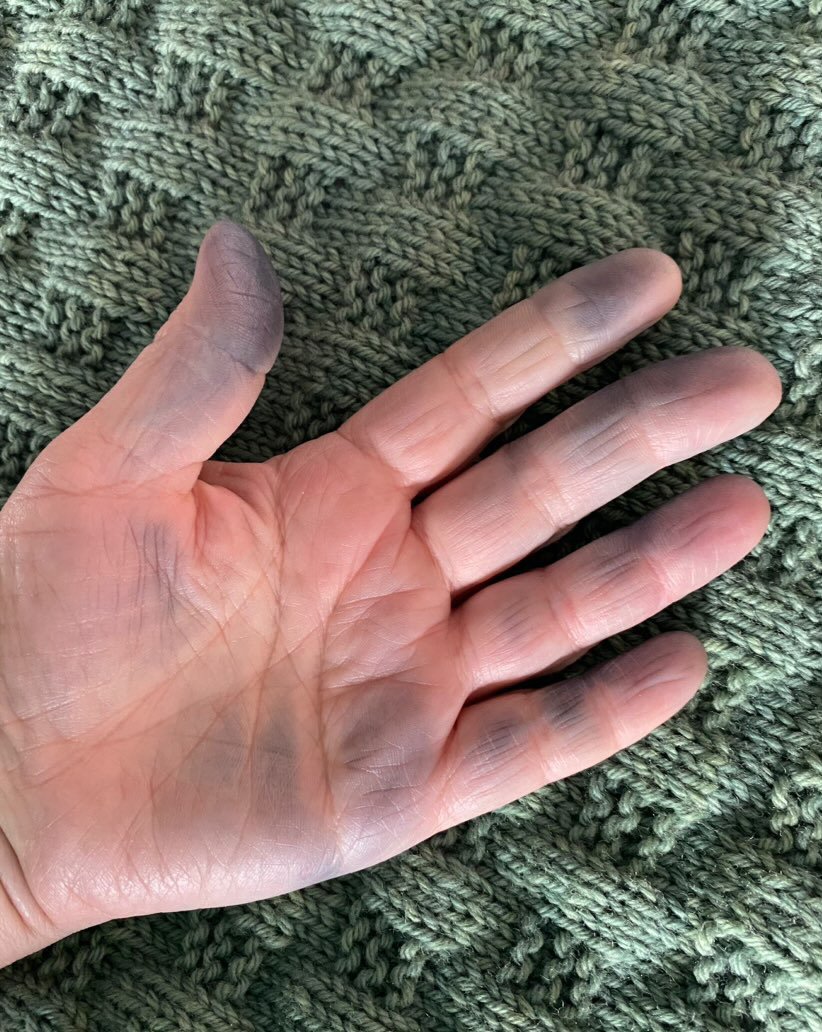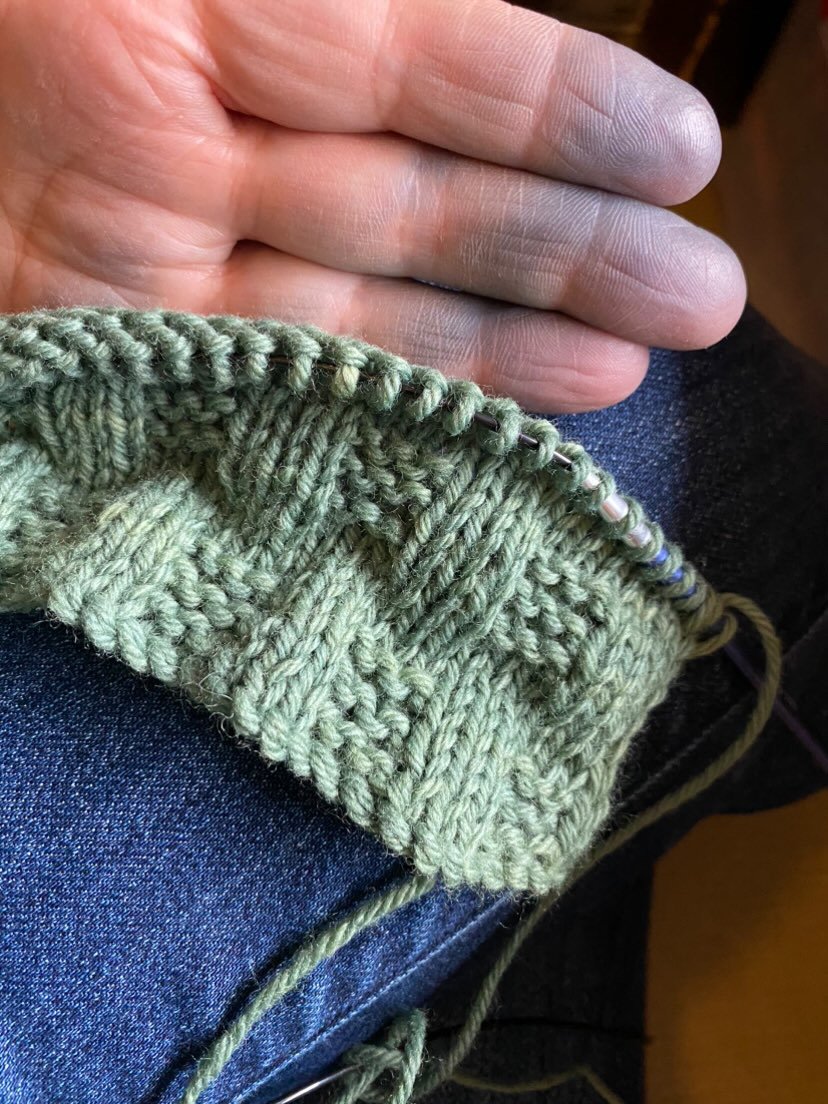Crocking
Crocking is the the transfer of excess dye molecules from fibre to other surfaces. The mechanical action of knitting/spinning/crocheting and weaving for example and the heat and oils on your hands can draw out the final bits of unattached colour from the yarn. Natural dyes tend to crock the most especially when no chemical setting agents are used (our yarn), but any type of dye is susceptible whether it is synthetic or natural. Crocking is more prominent in protein fibres (wool) and less so with cellulose fibres (linen and cotton).
Be rest assured, crocking will settle, it should easily wash off your hands and is only plant molecules not harsh chemicals. Crocking does not mean your yarn colour will run and can be knitted in colour work etc. with confidence. (I have knitted the darkest of Logwoods with white). Although crocking should settle after the first wash/blocking, sometimes a second wash is needed. We have washed the yarn MANY times before it is purchased but more colour will sometimes come off with the action of use.
Some of our plant colours are more likely to crock than others, Indigo and dark Logwood the most. If you think crocking will frustrate you we suggest choosing lighter colours, you should always enjoy the time spent with your yarn!



